Lockdown Lumen is a collaborative project by 12 artists in 8 different countries in various stages of COVID-19 lockdown. Using the medium of lumen, an alternative process which involveps printing with sunlight, we explore themes of self-isolation and home-boundedness – both through the subject-matter (home-brewed beer, a Skype call with family…) and through the materials themselves (the prints were made using objects and light found in or around the home).
Part 1 features six contributions. The remaining six will appear in Part 2, to be published next Sunday.
Introduction
Alternative processes
The Lockdown Lumen project was conceived on a Facebook group for alternative photographic processes (alt proc, for short). Alt proc is an umbrella term with no universally-agreed definition. It includes a vast range of processes, but what they have in common is that they are all photographic, that is, they involve “drawing with light”. Alternative processes range from virtually costless kitchen-counter methods (anthotypes made with beetroot juice, albumen prints made with egg-whites) to deluxe materials (glass plates coated with platinum or gold); from relatively common processes (cyanotype, mainstream by alt proc standards) to rare and esoteric ones (Mordançage); from historic (daguerreotype, invented in the 1830s) to modern (Polaroid lifts and inkjet transfers). Descriptions and instructions for all the processes mentioned above, and many more, are available on AlternativePhotography.com, which, incidentally, spawned the aforementioned Facebook group.
Lumen prints
Lockdown Lumen focuses on one such alternative process – lumen prints. The term “lumen” was popularised by Jerry Burchfield, but it is essentially a type of photogram – a camera-less photographic image, made by placing objects directly on a photosensitive substrate. Photograms have a long history, and illustrious practitioners including Anna Atkins, Man Ray and Pablo Picasso.
In its simplest form, lumen involves placing objects on photosensitive paper (like what we use for darkroom printing) and exposing it to sunlight for a few hours to create an image (here is a more detailed guide, if you’re interested). The image can be fixed, using conventional darkroom fixer, for greater permanence. This can result in some colour-shift or fading, so some artists prefer not to fix, instead viewing prints only under safelight – or simply embracing their transient nature. Other variations on the basic process include using a drawing or negative instead of an object, coating the paper with cyanotype fluid to make blue-tinted cyanolumens, using a UV lamp instead of sunlight, or subsequently toning, bleaching or colourising the print.
Lumens have a unique, delicate, almost luminous quality. The results are unpredictable – the look and colour of the final image depends on the type of paper used, exposure time, temperature, humidity, cloud cover and many other factors, which makes each print unique. The process is experimental, tactile and above all simple, requiring only photographic paper (expired or fogged photographic paper will also do) and optionally fixer. But within the constraints of this simple process, as you will see from the prints below, there is room for a remarkable range of creative and artistic expression.
For the Lockdown Lumen project, each of us created a handmade lumen print using objects and light found in or around the home. We’ve also included a short introduction to our work, and a process photo showing how the print was made.
Anjella Roessler (Geelong, Australia)
Working as a professional photographer, I did not have much spare time for experimentation. Serious health issues forced a sudden change and I decided that I wanted to expand the way I thought about my photography by enrolling into a Degree in Creative Arts majoring in photography. I played with several alternative processes and in my Honours year I started experimenting with paper negatives and large format pinholes, which became my final thesis work.
I am currently in the last stages of my MA and have been using lumen prints to document the history of sexual abuse in Australia. I research stories from records written in early times of white settlement, locate the sites where I take a plant, and I create lumens using these. I also have women participate from current times, who give me plants to create prints from. These will all be exhibited once lockdown has eased in Melbourne.
This new image forms the beginnings of my next project. I am interested in the idea of ritual and want to create images that contain elements of herbs used in magic as a form of living spell book. I use Ilford Hahnemuhle Art paper which I soak thoroughly in water before use. I then sprinkle the herbs over the paper and spray them further with salt water. I clip a sheet of glass over the top and they are laid outside for 48 hours, in whatever weather it happens to be. Once the 48 hours is up, I bring them inside, wash carefully and then fix the prints. Fixing changes tones, but it is important for my work that I have the prints usable as original images. For me, it is the unknown and unknowable parts of making lumens that is so appealing. Nature takes over and creates the images, and the result is always a surprise no matter how well you plan.
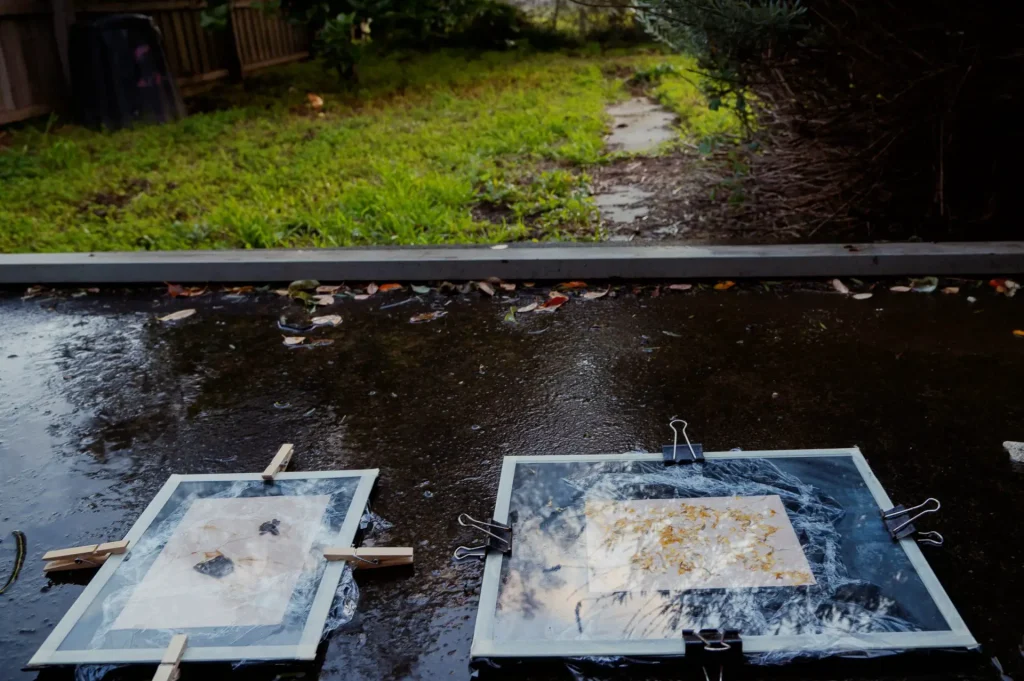
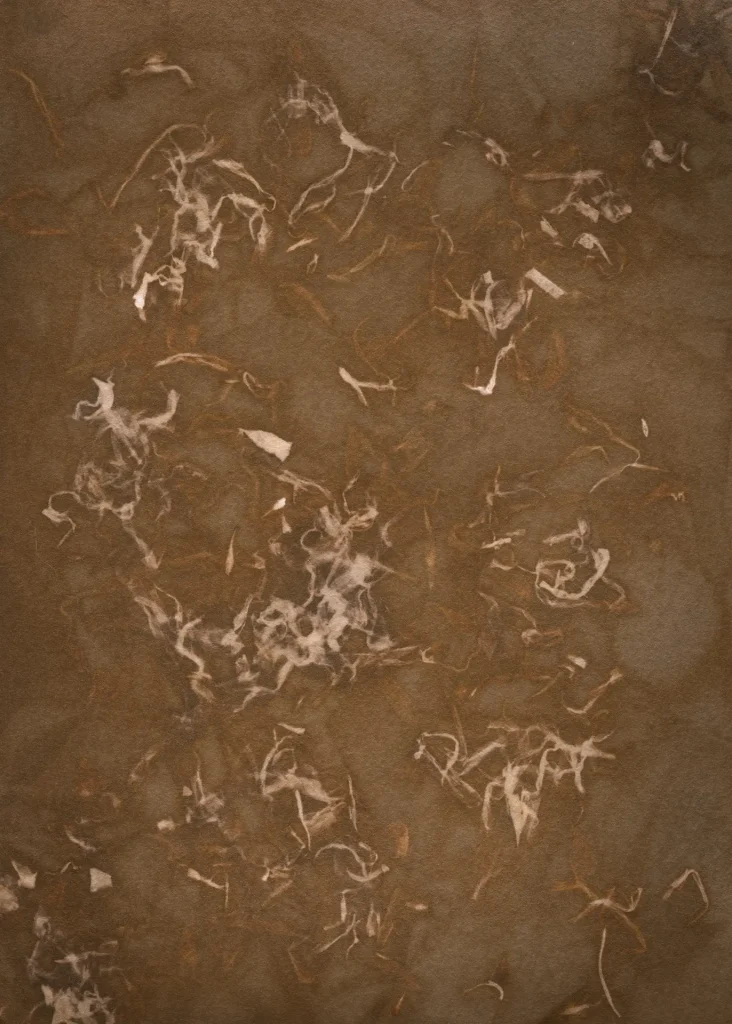
“If a girl touches the petals of a marigold with her bare feet, she will understand the language of birds.”
—Cunningham’s Encyclopedia of Magical Herbs
Han Soete (Antwerpen, Belgium)
I am a professional photographer who studied design at The Royal Académie of Art in Antwerp, at a time when the design department was still largely influenced by Bauhaus. After my studies I became involved in journalism and communication; in my jobs there has always been a place for photography. I quit my job in 2018 and started studying Art Photography at the same Académie. I have been teaching photography for adults since 2019.
In the last few years, in my media jobs, I mainly used my smartphone as a tool for photography. The images had to be published online as the events unfolded in real time. Even if I was working for alternative and activist media, I got totally fed up of the speed, and of chasing after the buzz of the day.
My choice of analog photography and all kinds of alternative photographic processes is mostly a reaction to more than 20 years of chasing the news. Analogue techniques require time – time to take the picture, time to develop your film, time to choose how to print the image…
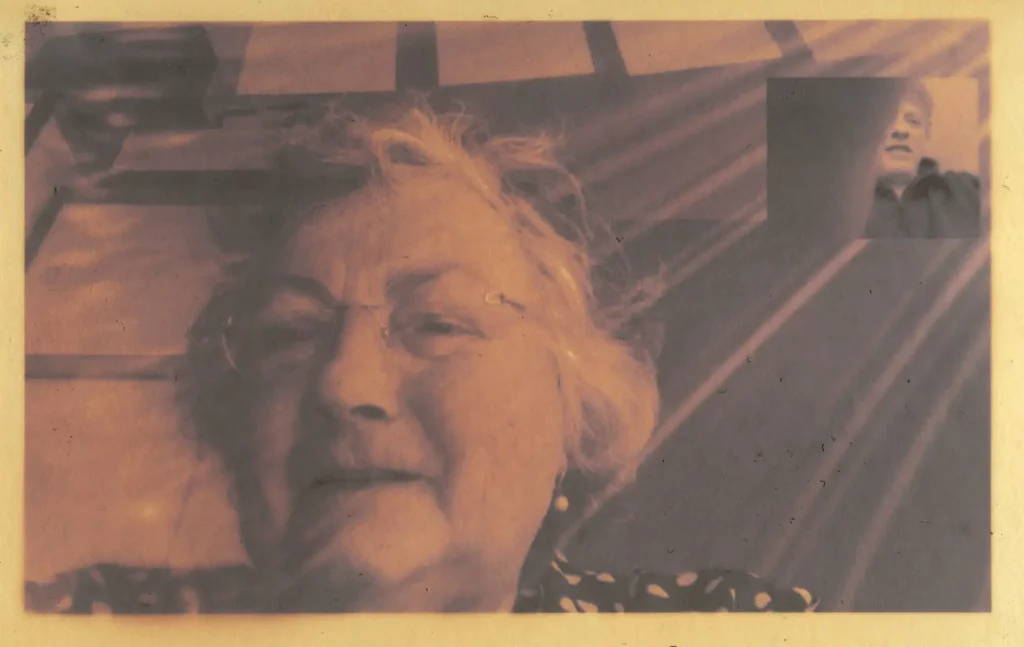
Since COVID-19 broke out, my mother has not left her apartment in Brussels. She has an immune system disorder. If she were to be infected by the coronavirus, she would probably not survive the disease. The picture I made is a screen capture from a messenger call, which we’ve had almost every day in the last two months. I made a digital negative that I printed on silver gelatine with sunlight as a lumen print. One print was put in a light-tight box. It has to be viewed in a darkroom under special red light, because under normal light, the image would degrade.
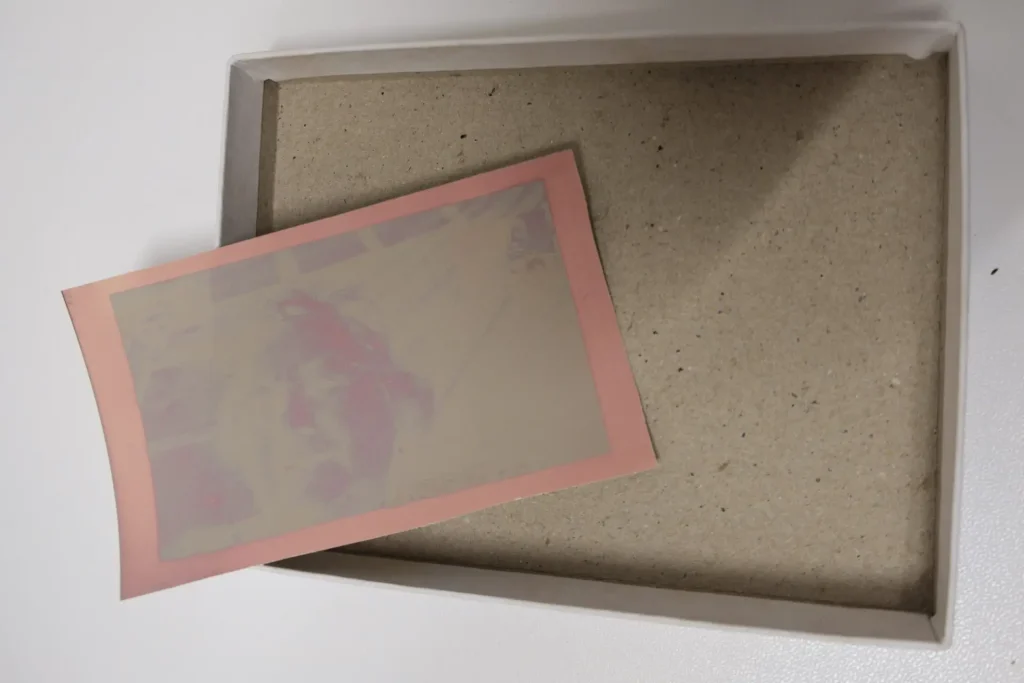
Links: Website | Instagram | Facebook page
Jeni Harney (Stalybridge, England)
I’ve always liked photography, but it was all point and shoot snapshots until my youngest son was born. I got a good digital camera that had manual settings and started to learn. It’s now 14 years later, I have a degree in photography, barely shoot anything digital anymore and love alternative processes.
I’ve been creating work with cyanotype for a few years, and last year I started making wet cyanotypes and lumens, mainly from flowers collected locally. I love this process as it’s so unpredictable. I have some expired photo paper. It’s no good for darkroom printing, as it just turns black when put into the developer, however, it is perfect for lumen prints, and I’ve had some really beautiful results with it. I love the feeling of depth that these lumen prints have, there’s almost a 3D effect happening in some of them.
During lockdown, I have been collecting wild flowers on my not quite daily walks. These have been printed as wet cyanotypes, as well as lumen. With being unable to travel very far because of COVID-19, I felt I had exhausted my local supply of spring wild flowers, so on my occasional trips to the supermarket, I’ve been buying bedding plants for the garden. Pansies didn’t work as a wet cyanotype, so I’ve printed as a lumen instead and this is the print I have chosen to share for this project.
My next project will be to combine lumen and cyanotype. I have planted lots of seeds this spring, and I’m seeing all the small shoots popping through the soil now. Soon, I shall have a plethora of flowers just a couple of steps from my front door to create as many images as I am able to.
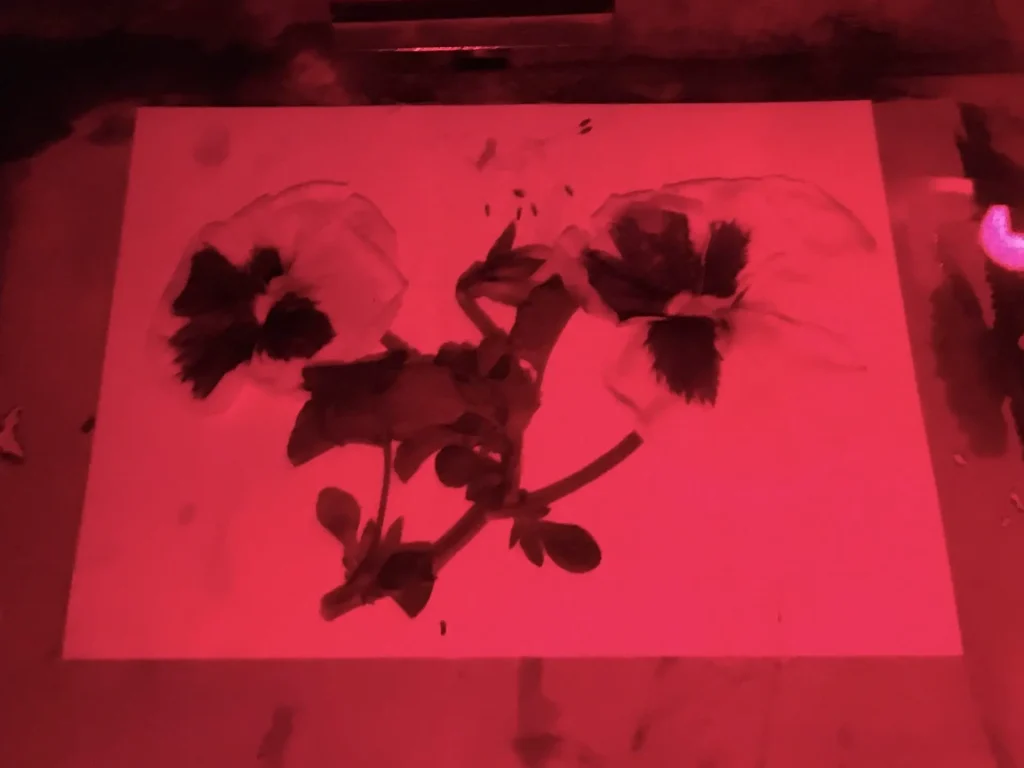
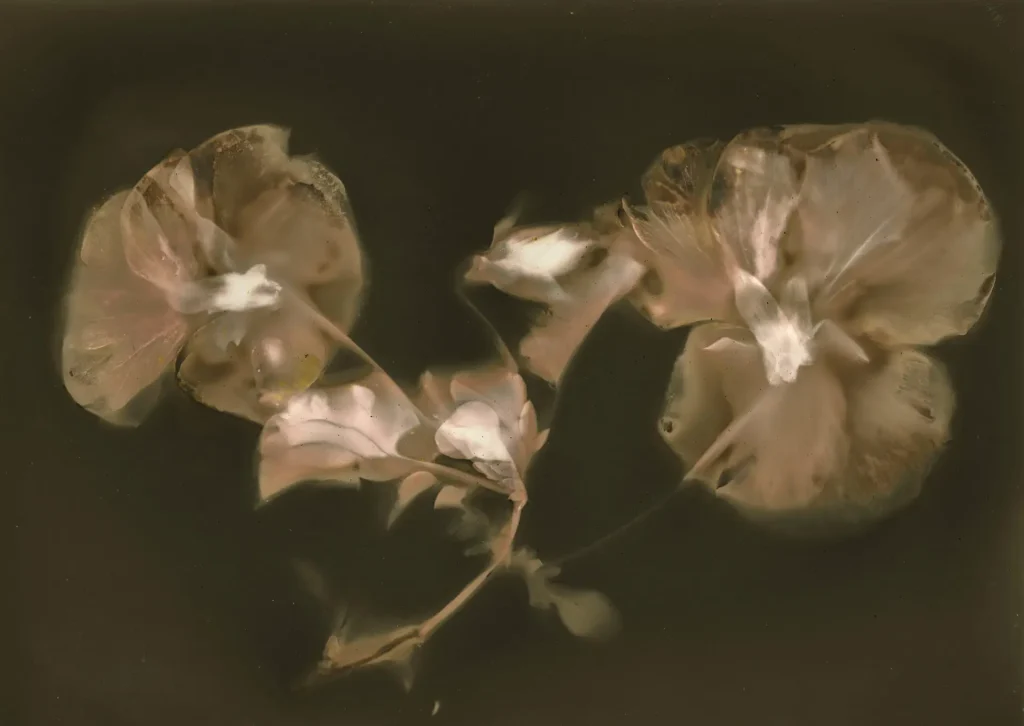
Stig Marlon Weston (Oslo, Norway)
Working as a professional photographer for almost 20 years I have been holding on to my darkroom through the whole digital shift. Always experimenting and cataloguing ideas and techniques for future projects, I still try to stay away from reading too much about what processes other people are using. I started trying out lumen printing during an artist residency in Spain four years ago without knowing that the process already had a name. My earlier project had been making photograms on film outdoors at night in the forest. So for this trip I wanted to move away from my that and do things in an opposite way. I still wanted to make prints outdoors, but on paper, during daytime, on a mountain rather than in a forest, and so on. I focused on rocks and the shape of cairns built along the pilgrim paths going over the mountain and the prints ended up in a gallery show in my hometown.
I have explored lumen printing for four years and I love to try and use the process to photograph things I am doing or experiencing. For this print I decided to document my latest batch of home brewed beer that I have made during the COVID lockdown. I made a set of three small lumens in my window to catch the mess of bottles and cleaning that happens when I bottle my beer. I usually both develop (very carefully) and fix my lumen prints, as I would normal photographs. So for this I chose to develop the prints in my own home brewed beer, in an alternative recipe of caffenol coffee developer that I have been using before.
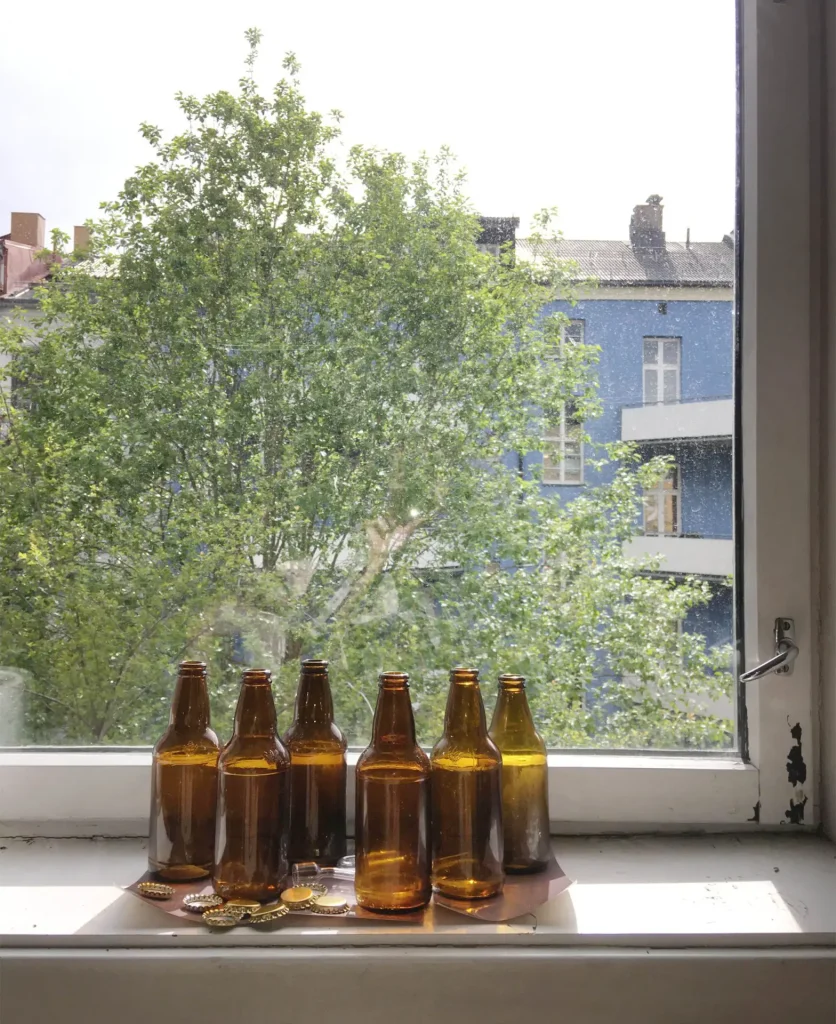
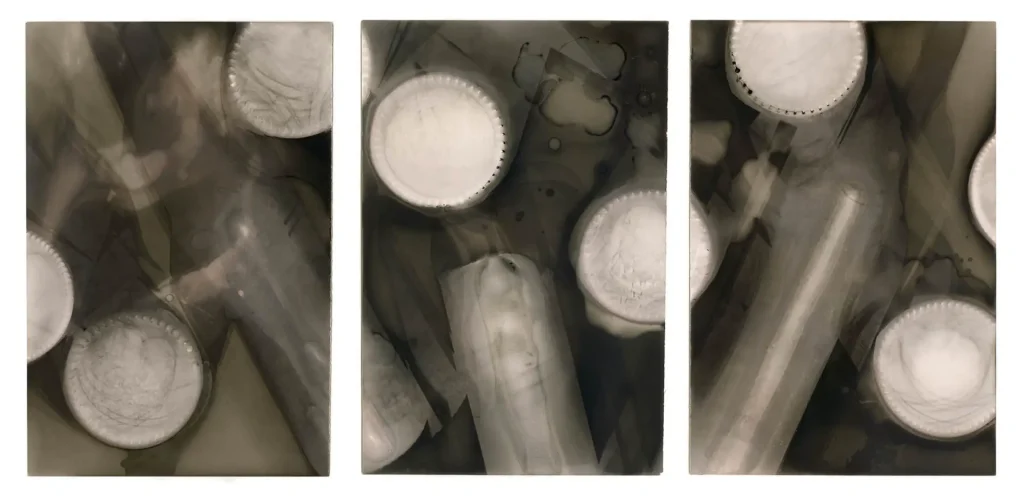
Melissa Mitchell (Glasgow, Scotland)
I am a visual artist from Johnstone, working across Glasgow and Renfrewshire. It was during my final year of art school that I first became acquainted with alternative processes. I spent most of this year developing a body of work which was made using the traditional cyanotype process and later toned using wine tannin. Since graduating, I’ve continued pursuing both commercial and personal projects. I’ve also used this time to explore different ways of making images, including Polaroids, cyanotypes and other alternative processes.
I’d never heard of lumen printing until I saw some prints made by Caroline Finn, one of my classmates during my time in art school. There and then I made a mental note to experiment with the process at some point in the future but it wasn’t until the COVID-19 pandemic that I finally thought about investing some of my newfound free time in it. The images below are from my first foray into lumen printing. I made these images outside my flat in Glasgow with just a few clip frames from Ikea and a pack of Ilford’s Fibre Based Warmtone Glossy Paper. I then exposed the images on a sunny day for an hour and a half and later fixed the prints using Ilford’s Rapid Fixer in my bathroom. I currently don’t have a designated area to make prints or process film in, but what I like about alternative processing is that you don’t need access to a lot of equipment or space to make impactful images. I truly feel like lumen printing has reignited my passion for alternative processing and I’m excited to develop another body of work using this process.
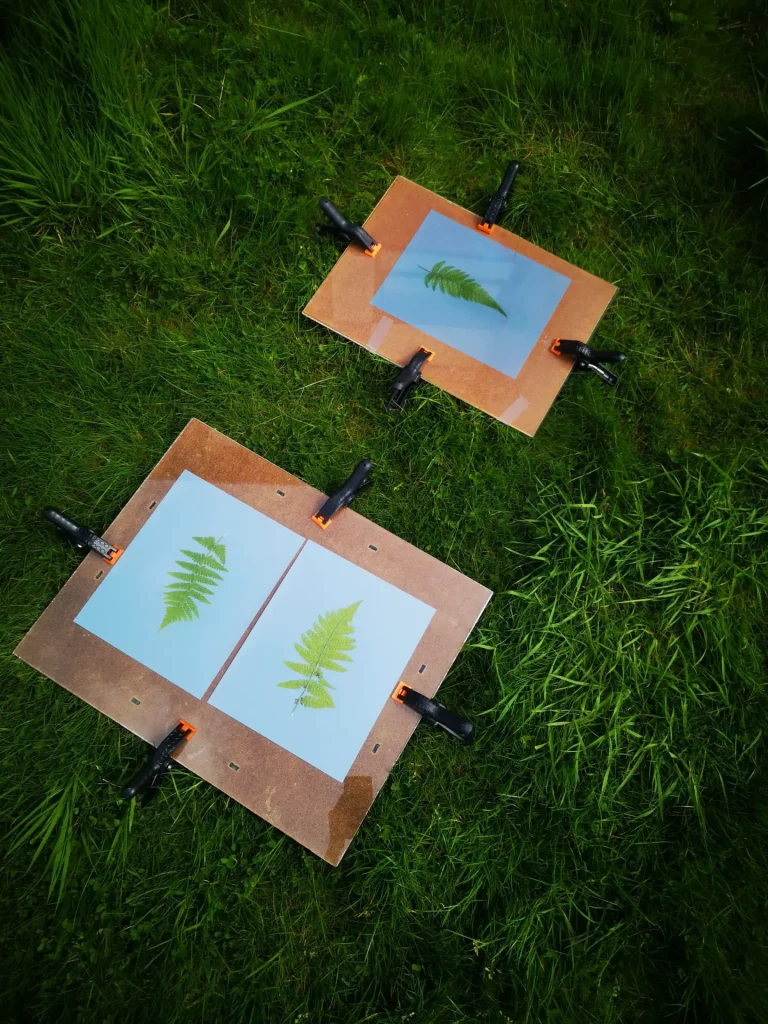
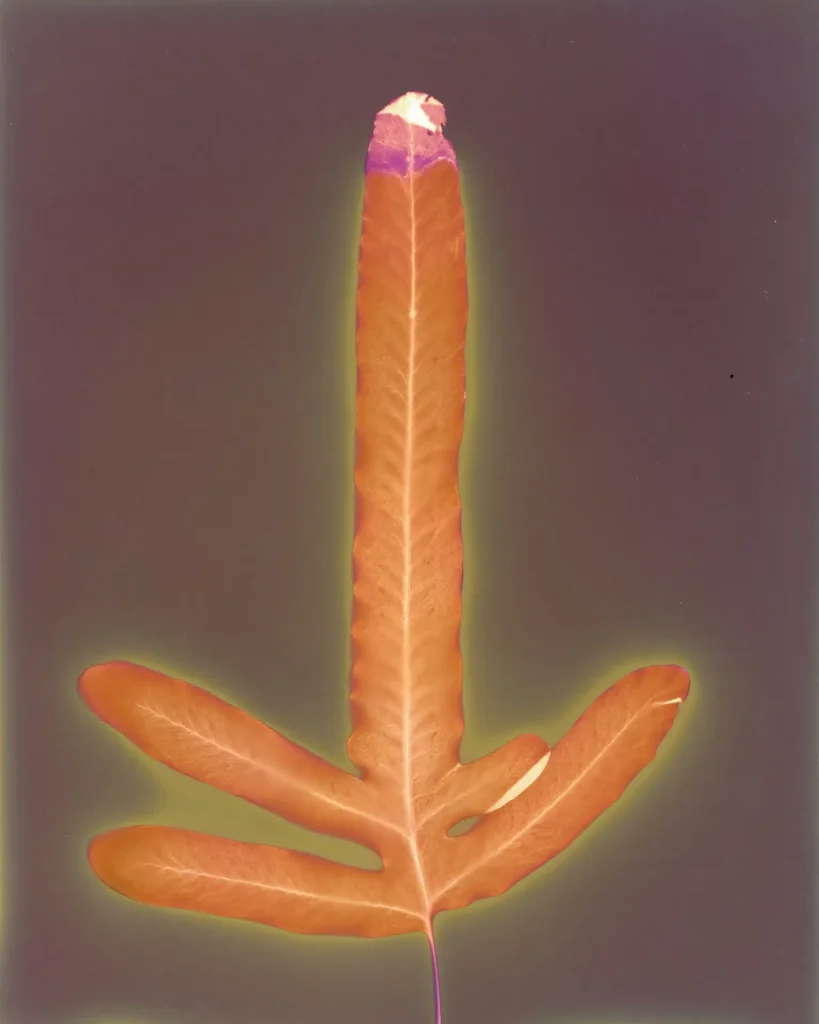
Jessica Hays (Montana, USA)
I am a conceptual photographer, alternative process printmaker, and curator from Bozeman, Montana. My work focuses on human relationship, issues of mental health, loneliness, trauma, loss, and places of healing. I work in a variety of processes, including historic and alternative photo processes, experimental darkroom techniques, pigment printing, and handmade artist books. Born and raised in Montana, I have bachelor’s degrees in Photography and Liberal Studies with a minor in Psychology from Montana State University. I am an MFA candidate at Columbia College Chicago. My work has been shown both regionally and nationally, and I have lectured on topics of mental health and alternative process photography at conferences and art openings.
I first became aware of alternative and experimental processes in highschool, when my teacher covered hand coloring, toning, and sabbatier printing. It wasn’t until University that I became familiar with the variety of alternative and experimental photo processes, and became so interested in using them. Currently, I am working on several bodies of work, one using gum printing and digital negatives, and another cyanotype lumen printing without negatives. I find cyanotype an intuitive process, and working with sunlight to be part of the magic. Without a unit with which to measure the light falling on the paper, exposure times become about instinct and following a gut feeling. I began the cyanotype lumen prints at a residency in New Mexico, and have continued to make them upon returning home at the beginning of quarantine. This particular image was made in my backyard on a day with almost no cloud cover, making the exposure very quick.
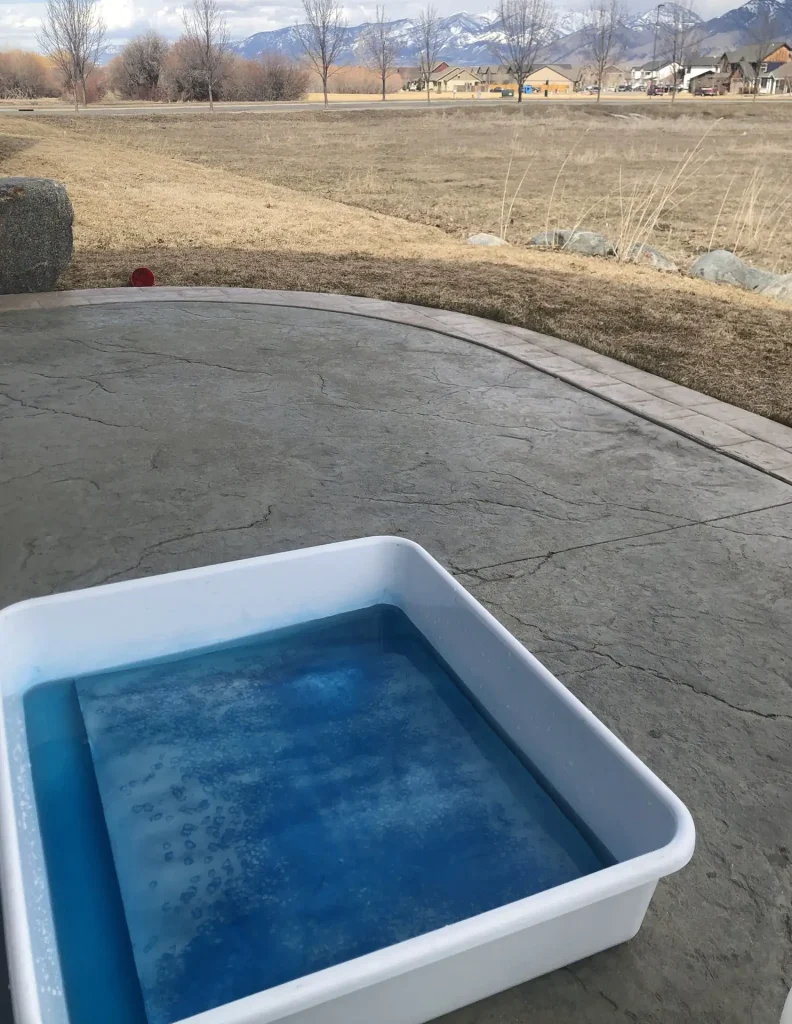
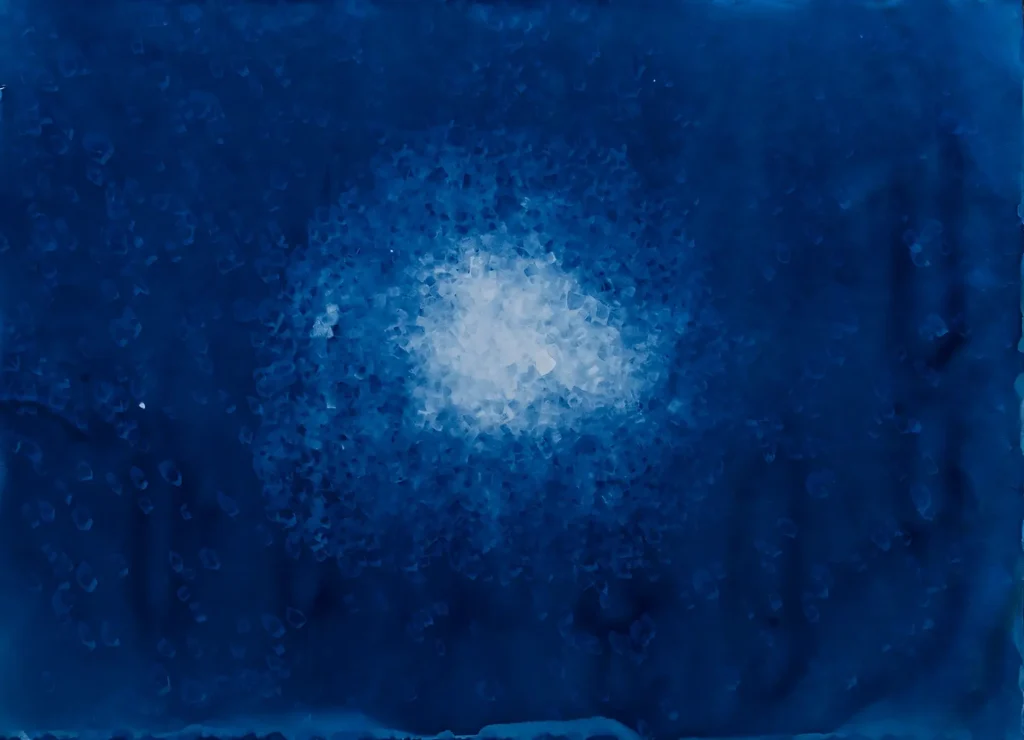
Next up: Part 2!
If what you’ve seen so far in Lockdown Lumen makes you want to find out more or try your hand at lumen printing or other alternative processes, check out AlternativePhotography.com, or its sister Facebook group where this project was born. Or post your alt proc questions in the comments section, and we’ll do our best to answer. Thanks for reading, and watch this space for six more lumen prints in Part 2, to be published next Sunday.
Share this post:
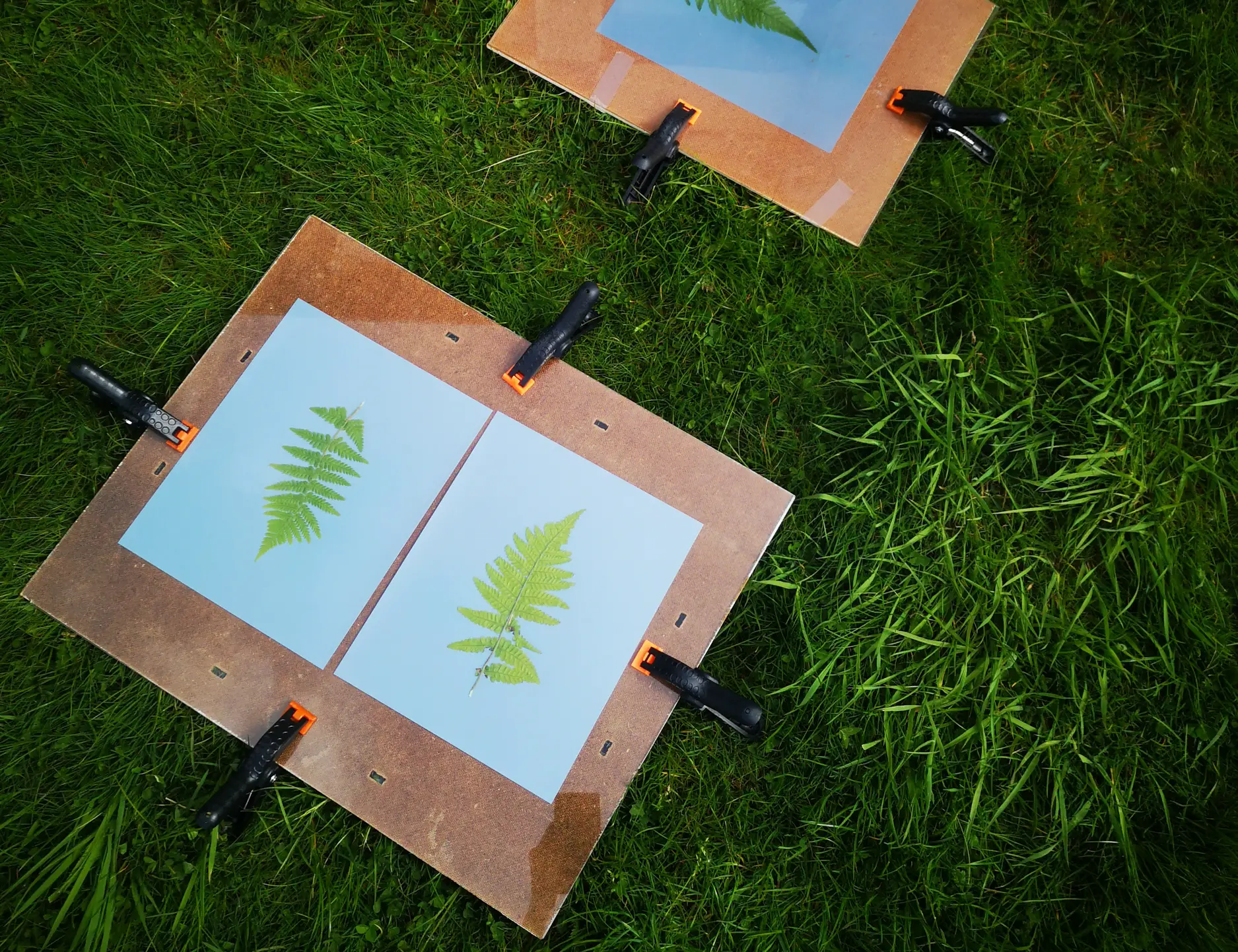



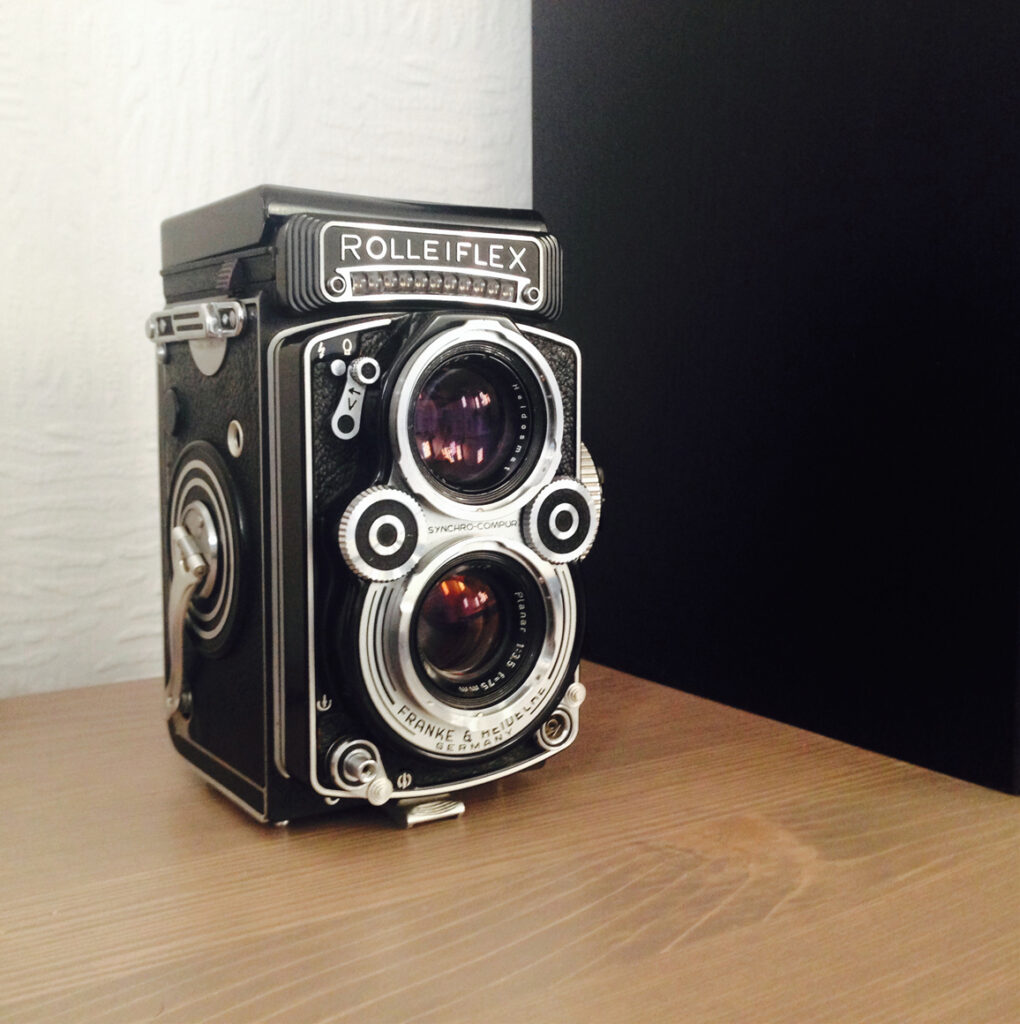




Comments
Jonny Wolfe-Slater on Lockdown Lumen – Artists around the World Printing with Sunlight
Comment posted: 24/05/2020
Comment posted: 24/05/2020
Comment posted: 24/05/2020
Khürt Louis Williams on Lockdown Lumen – Artists around the World Printing with Sunlight
Comment posted: 24/05/2020
Rock on Lockdown Lumen – Artists around the World Printing with Sunlight
Comment posted: 24/05/2020
Bent_Brent on Lockdown Lumen – Artists around the World Printing with Sunlight
Comment posted: 26/05/2020
Kajal Pawar on Lockdown Lumen – Artists around the World Printing with Sunlight
Comment posted: 26/05/2020
Comment posted: 26/05/2020